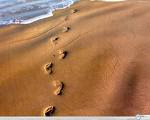The most common symptom is cracked, flaking, peeling skin between the toes. The affected area is usually red and itchy. You may feel burning or stinging, and there may be blisters, oozing, or crusting. In addition to the toes, the symptoms can also occur on
the heels.
What you need to do is keep your feet clean and dry, especially between the toes.
Wash your feet thoroughly with soap and water and dry the area very carefully and completely. We highly recommend "Fungasoap" available at our clinic and on our website.
Wear clean, socks and change your socks and shoes as often as necessary to keep your feet dry. At Advanced Foot Care Clinic we offer our patients with athlete's feet bamboo fiber socks that help wick away moisture from your feet. This will help to keep sweaty feet dry.
Athlete's foot almost always responds well to self-care,
although it may come back. Then it is necessary to see a podiatrist and he can prescribe antifungal medications.
The body normally hosts a variety of microorganisms, including bacteria and fungi. Some of these are useful to the body and others may, under certain conditions, multiply rapidly and cause infections.
Athlete's foot is contagious and can be passed through direct contact, or contact with items such as shoes, stockings, and shower or pool surfaces.
The diagnosis is based primarily on the appearance of your skin. If tests are performed, they may include: skin lesion KOH exam: which means skin scrapings in KOH show fungus under the microscope.
To prevent athlete's foot, follow these measures: Dry your feet thoroughly after bathin
g or swimming. Wear sandals or water shoes at a public shower or pool. Change your socks often to keep your feet dry. Use antifungal or drying powders to prevent athlete's foot. We recommend Zeasorb AF powder, available at our clinic. Wear shoes that are well ventilated and, preferably, made of natural material such as leather. It may help to alternate shoes each day, so they can dry completely between wearings. Avoid plastic-lined shoes.
Our website is www.vailfoot.com To make an appointment at Dr. T. F. Vail, DPM 419-423-1888
Fungasoap contains tea tree oil which is an antifungal itself. Just apply some of this soap to washcloth when showering and to your feet and rinse well. This helps to wash away bacteria and fungus from your skin. Be sure to apply to between the toes and dry thoroughly




